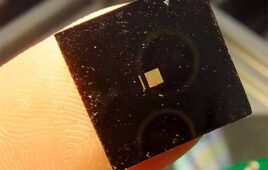
[Photo from unsplash.com]
University of Luxembourg and University of Strasbourg researchers collaborated to create algorithms to predict the deformation of the brain during surgery and give information pertaining to the current position of the targeted surgical area and its vulnerable areas.
Traditionally, surgeons have a limited view of the organ they are operating on and cannot see what is on the inside of the organ. medical images can be taken prior to the procedure, but the target and risky areas continuously change throughout the procedure. In the dark, surgeons have to rely on their prior experience with surgical instruments to do things like remove tumors without damaging healthy tissues and blood vessels.
Stéphane Bordas, a professor in computational mechanics at the faculty of science, technology and communication at the University of Luxembourg, and his research team use medical imaging data from MRIs to break down areas of the brain into subvolumes like Legos. Each Lego has a corresponding color to whatever material it represents from the brain – white, gray or fluid materials. Thousands of color-coded digital Legos interact with each other while they compute deformation of the brain during an operation. The more blocks there are, the more accurate the simulation will be. However, as the number of blocks increases, surgeons may be faced with a slower reaction time because more computing power is needed.
The research is one of the first instances that allows accuracy and computational time to be controlled in a simulation.
“We developed a method that can save time and money to the user by telling them the minimum size these lego blocks should have to guarantee a given accuracy level. For instance, we can say with certainty: if you can accept a 10% error range, then your Lego blocks should be maximum 1 mm. If you are ok with 20%, you could use 5 mm elements,” said Bordas. “The method has two advantages: you have an estimation of the quality and you can focus the computational effort only on areas where it is needed, thus saving precious computational time.”
Bordas and his researchers hope to give surgeons a solution that can benefit them during operations by constantly updating the simulation model in real-time with data from a patient, though that may take some time, according to Bordas.
“We still need to develop robust methods to estimate the mechanical behavior of each Lego block representing the brain,” said Bordas. “We also must develop a user-friendly platform that surgeons can test and tell us if our tool is helpful.”
The research was published online in IEEE Transactions on Biomedical Engineering.
[Want to stay more on top of MDO content? Subscribe to our weekly e-newsletter.]




